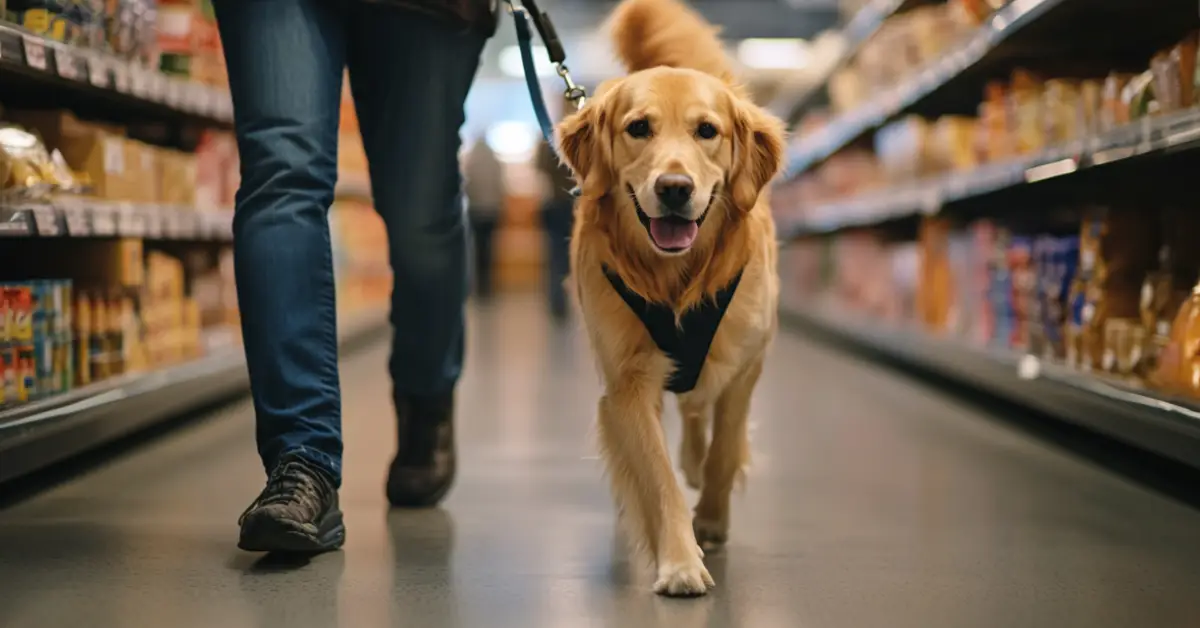How to Know When Your Service Dog is Stressed

Understanding when your service dog is stressed is crucial for both their well-being and their effectiveness in assisting you. Let’s delve into the signs of stress in service dogs, with illustrative examples, and explore what steps you can take to alleviate their stress.
Recognizing Stress in Service Dogs
Physical Signs of Stress
- Change in Body Language: A stressed dog might have a lowered head, a tucked tail, or flattened ears. For example, if your dog, who normally stands alert, starts showing a hunched back, it could be a sign of discomfort.
- Health Symptoms: Keep an eye out for physical symptoms like diarrhea or vomiting. A dog that usually has a hearty appetite but suddenly refuses meals might be stressed.
Behavioral Indicators
- Altered Behaviors: If your usually calm dog starts barking excessively or shows aggression, these could be stress indicators. For instance, a service dog that starts growling in situations it previously handled well might be signaling distress.
- Excessive Grooming: A dog licking its paws more than usual can be a sign of anxiety.
Service-Specific Signs
- Decreased Responsiveness: If your service dog starts ignoring commands or is slow in performing tasks, it’s a red flag. For example, a guide dog that suddenly stops leading effectively might be stressed.
- Reluctance to Work: Showing avoidance towards its harness or reluctance to perform its duties is a key sign. A dog that hesitates or pulls away from its harness, which it normally wears without issue, is exhibiting stress.
Impact of Stress on Service Dogs
Stress not only affects a service dog’s health but can also significantly impact its ability to perform necessary tasks. For example, a stress-affected service dog might become distracted easily, leading to potential safety risks for its handler.
Addressing Stress in Service Dogs
- Regular Veterinary Care: Regular check-ups can rule out health issues. For instance, a dog that becomes lethargic may have an underlying medical condition rather than just stress.
- Monitoring and Documentation: Track your dog’s behavior patterns. A diary noting instances when your dog seems anxious, like during loud events, can help identify stress triggers.
- Creating a Supportive Environment: Ensuring a calm environment is crucial. If possible, avoid exposing your dog to overly stressful situations, like crowded, noisy places.
- Ongoing Training and Socialization: Keep reinforcing positive training and socialization. For example, if your dog is nervous around children, gradual, positive exposure can help reduce stress.
- Seeking Professional Advice: If signs of stress persist, consulting a veterinarian or a professional dog trainer is essential.
- Handler’s Stress Management: Your emotional state can affect your dog. Practicing stress-relief techniques can have a positive impact on your dog’s well-being.
- Ensuring Proper Rest and Nutrition: Adequate rest and a balanced diet are fundamental for managing stress. For instance, a well-rested dog is less likely to be irritable in stressful situations.
Conclusion
Identifying and addressing stress in your service dog is key to maintaining their health and ensuring they can perform their duties effectively. Regular observation, healthcare, and a supportive environment are essential.
If you’re concerned about your service dog’s stress levels, don’t hesitate to seek professional help. Remember, a happy and healthy service dog is a more effective and reliable companion.
About the Author: The writing team at Service Dog Certifications is made up of folks who really know their stuff when it comes to disability laws and assistance animals. Many of our writers and editors have service dogs themselves and share insights from their own experiences. All of us have a passion for disability rights and animals.
Latest Posts

Can You Bring a Service Dog to the Hospital?
Yes, you can bring your service dog to the hospital. ADA service dog laws protect your right to be accompanied by your service dog in hospitals, just as in other public places. However, there are some important exceptions you should be aware of — particularly in sterile environments like operating rooms where patient safety concerns […]

Read More

How to Select Treats During Service Dog Training
The key to effective service dog training is matching your treats to the task: use high-value treats for teaching crucial skills like medical alerts or guide work, medium-value treats for practice sessions, and basic treats for everyday good behavior. There is an incredible variety of service dog tasks that help with qualifying disabilities, from acting […]

Read More

Can You Bring a Service Dog to a Grocery Store?
Yes! Service dogs can go into any grocery store with you, even if the store has a no-pets policy. It’s that simple: it’s your right under the Americans with Disabilities Act. If you can go somewhere in the store, your service dog can, too. In some cases, service dogs can even ride in the shopping […]

Read More




